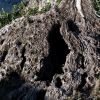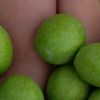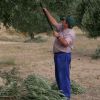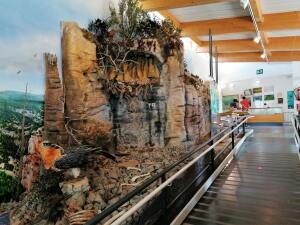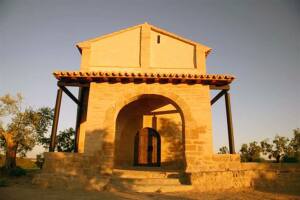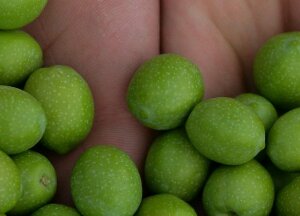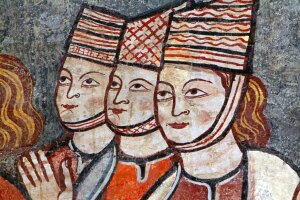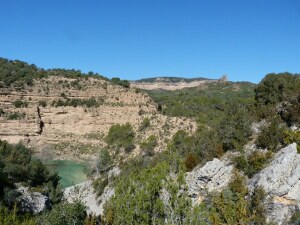Until halfway through the 20th century the olive groves of Bierge stretched as far as the eye could see. Terraces carved from the mountain slopes created flat bases where a multitude of centennial olive trees took root.
The collection of olives always took place during the coldest months and sometimes lasted well into the month of March, so activity in the mill was continuous until the start of spring.
The end of the harvest was always a significant event and a reason for celebration. So, when a particular house had finished, the occupants would announce it to the whole village, ringing bells and hanging a branch full of olives from their balcony. That night there would be roast goat served with ajaceite, a kind of thick mayonnaise made with olive oil and garlic, poncho to drink and a dance for all the workers and anyone else who wanted to join the party. As the end of the olive collection was staggered from one house to another, there were parties almost every night in Bierge in spring.
The olives would enter the mill along a ramp that reached the highest floor, either on the back of donkeys and mules or carried by the labourers. The joists in the mill are vey close together; when it was built it was taken into account that the floors would have to support thousand of kilos of olives waiting to be pressed.
The olives would fall down into a hopper from where they would pass to the cylindrical millstone, which crushed them into a thick paste. This was then loaded onto round, woven mats that were piled one on top of the other in order to go to the press. Sometimes, as the pressing started, this huge pile of mats brimming with thick olive paste would fall over and the workers would have to pile them on the press again. If the olives had frozen, it was almost impossible to press them and extract their oil. Even if everything went well, if the pressing wasn’t 100% efficient then it would often have to be repeated.
A new hydraulic press was later installed equipped with a central axis that had a place for the olive laden mats, so avoiding the collapse of the pile.
Around 1940 a fledgling co-operative worked together to buy another mill, which was known locally as italianos. To finance the purchase each shareholder gave over 3 litres of olive oil for each share held. This new mill helped tremendously with the work of producing oil given that it had a chamber that circulated hot water. The water was heated by a boiler that used the dry olive pomace as fuel, due to the high calorific value it retained.This mill was originally constructed in 1930. The villagers were the owners who each had a varying amount of shares and each share corresponded to a pressing. However, many proprietors had more olives to grind than their quota of pressings could cope with, so the extra pressings necessary were allocated using a strict rota and paid for separately.
The first to take his turn in the mill would have always been at a disadvantage as the majority of the paste from his olive harvest would remain on the mill stones as a lubricant. To avoid this situation and ensure that the loss was fair for all concerned, at the beginning of each campaign the untaduras were collected. These were quotas of olives per share held, which were used for the first grinding with the specific aim of lubricating the mill stones. Activity in the mill went on for 24 hours of the day with 4 operators working 12 hour shifts. They ate and slept in the mill.
Bierge survived from the production of olive oil. It was the sale of oil, along with wine and soap, which guaranteed the survival of the villagers. It would also be exchanged for straw with villagers from the south of the region and for potatoes and vegetables from mountains villages such as Pedruel, Rodellar, Bara, Binueste, Villanuba, Secorún, Matidero and Otín.
When production improved with the introduction of new machinery, a good part of the oil went on sale in Tortosa, the pomace was sold in Tárrega for the production of olive-pomace oil (known in Spain as aceite de orujo de oliva, which is lower in quality) and the sediment and dregs from the bottom of the tanks was auctioned off to make soap.



